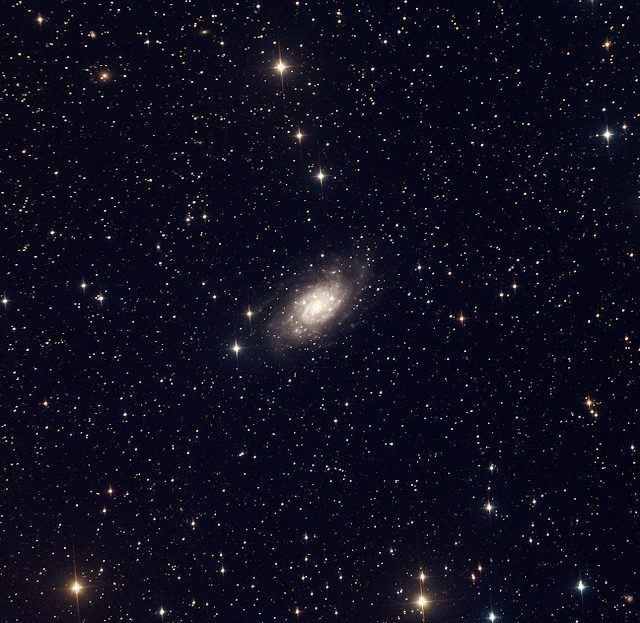 |
| NGC 2403 - Spiral Galaxy in the constellation Camelopardalis. Image by Michael Petrasko on ATEO-1 - LRGB 2x300 Seconds each. Binning 2. Image Processed with CCDStack2. |
The constellation contains no bright stars, but some interesting galaxies wait for observers that happen to point their instruments in this part of the sky. One of these galaxies is NGC 2403, the showpiece of Camelopardalis. NGC 2403 (also known as Caldwell 7) is an intermediate spiral galaxy. NGC 2403 is an outlying member of the M81 Group and is approximately 8 million light-years from Earth. The object has a striking similarity to M33, The Triangulum Galaxy being about 50,000 light-years in diameter and containing numerous star-forming H II regions. The northern spiral arm connects it to the star-forming region NGC 2404.
 |
| Finder Chart for NGC 2403 - Image Credit: IAU and Sky and Telescope Magazine. |
NGC 2403 can be seen easily as a large hazy spot in 10x50 binoculars, and a telescope will show a bright elliptical haze surrounded by a faint outer halo. A definite degree of mottling becomes apparent with larger telescopes, the effect of dust scattered throughout the spiral arms.
Anyone can image this galaxy and other deep-sky wonders by signing up for an account on Insight Observatory's online ATEO Portal or by using our Public Image Request (PIR) form.

No comments:
Post a Comment